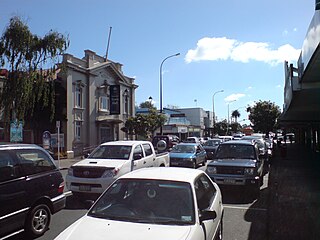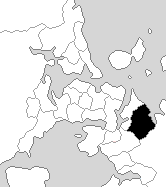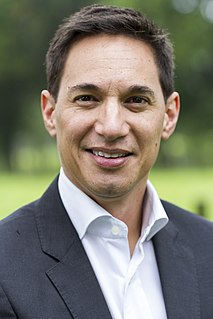
Howick is an eastern suburb of Auckland, New Zealand, forming part of what is sometimes called East Auckland. Due to the relatively numerous remaining heritage buildings and other historical remnants from its early European settlement past, it has been called "perhaps Auckland's most historically conscious place".

Papatoetoe is a suburb in Auckland, New Zealand. One of the larger suburbs of the area commonly known as South Auckland, it is located to the northwest of Manukau Central, and 18 kilometres southeast of Auckland CBD.

Bucklands Beach is a suburb 13 kilometres (8.1 mi) east of Auckland's CBD in New Zealand. The suburb is in the Howick ward, one of the thirteen administrative divisions of Auckland Council.

Green Bay is an Auckland suburb. It is under the local governance of the Auckland Council. The population was 3,936 in the 2006 census, an increase of 321 from 2001. The main road running through Green Bay is Godley Road and this is the Urban Route 15 that follows through Green Bay to Titirangi and Laingholm.
Campbells Bay Primary School is located between Campbells Bay and Castor Bay on Auckland's North Shore. It is attended by children from the ages of 5 to 11. When they leave at the end of year 6, pupils usually move on to Takapuna Normal Intermediate School or Murrays Bay Intermediate School.
Hauraki is a suburb of Auckland, New Zealand. It is under the local governance of the Auckland Council.
Waikowhai Intermediate School is a coeducational intermediate school located at 650 Richardson Road, Mount Roskill, Auckland City, New Zealand. It serves the areas of Mount Roskill, Waikowhai, Lynfield and Blockhouse Bay. The current principal is David King. The school originated in 1965 as a Teacher Training College, and began serving as an intermediate school in 1967.
Beardsley School District, in Bakersfield, California, traces its origins back to the late 19th century when Lewis A. Beardsley donated an acre of land and helped build a one-room schoolhouse in May 1882. Mr. Beardsley was a former teacher and principal at Bakersfield School and served as Kern County Superintendent of Schools from 1874 to 1877. Following his county superintendence, he went into farming and later donated an acre of land to establish Beardsley School District. Beardsley School began with two teachers, Louis Beardsley and C. M. Chadwick, with an average daily attendance of 25 students. In 1883, Alexander B. MacPherson was added to the staff. Mr. MacPherson also served as Kern County Superintendent of Schools from 1883.

Cheadle Hulme High School (CHHS) is an 11–18 mixed secondary school and sixth form with academy status in Cheadle Hulme, Cheadle, Greater Manchester, England. In 1997, it was awarded specialist language college status and in 2000 it became a training school. It has been an academy since 2012 and operates as part of The Laurus Trust.
Sancta Maria College is a co-ed Catholic School in Auckland, New Zealand. It is named after the schooner on which Bishop Pompallier travelled around New Zealand.

Ōhuiarangi / Pigeon Mountain is a 55 m (180 ft) high volcanic cone at Half Moon Bay, near Howick and Bucklands Beach, in Auckland, New Zealand. The cone forms the last part of volcanic activity that lasted many years. An earlier explosive eruption, created the prominent tuff ring that is still clearly visible extending in an arc south of Sunderlands Road. Two much smaller craters were formed to the north west of the main cone. The smaller lies buried under Pigeon Mountain Road outside number 18, and the other forms 'Heights Park' - a private reserve for the owners of 29 - 41 Pigeon Mountain Road and 14 - 36 Prince Regent Drive and 33 - 39 Tyrian Close. It forms part of the Auckland volcanic field and is popular for scientific school trips. It was first quarried for roading metal by fencibles from the 1847 fencibles settlement at Howick. Quarrying continued for many years. In the 1920s the Shaw brothers worked with Harold Kearney, Dud Langdon and Jim Taylor using a pair of draught horses to pull a dray loaded with metal. In 1848 John Campbell and James Smyth both from the fencible ship Sir Robert Sale, had the contract to spread metal on the road from Howick to Panmure, for which they were paid 5/-per day. At that time the mountain was named Pigeon Tree Hill
Belmont Intermediate School is a state coeducational intermediate school located in Belmont on the North Shore of Auckland, New Zealand. It was established in 1957.

Turnfurlong is an area of Aylesbury in Buckinghamshire, England. It is roughly defined as the area of housing that adjoins the two roads, Turnfurlong and Turnfurlong Lane.

Howick is a former New Zealand parliamentary electorate, which existed for one parliamentary term from 1993 to 1996, and was held by Trevor Rogers. In 1995, Rogers defected from National to the Right of Centre party.

Hasland Hall Community School is an English secondary school situated in Hasland, a village in Chesterfield, Derbyshire, England. Hasland Hall, for many years was the residence of Mr Bernard Lucas JP and then converted into a school. But the school is not wheelchair friendly due to the size of corridors.

Howick College is a state co-educational secondary school located in the eastern Auckland, New Zealand suburb of Cockle Bay. Serving Years 9 to 13, the school has a roll of 2132 students as of August 2018.
Farm Cove Intermediate School is an intermediate school located in Pakuranga, Auckland. It opened in 1979. In August 2018 it had a roll of 622 students.

Daniel Michael Bidois is a New Zealand politician and economist who currently serves as a Member of the House of Representatives for the National Party. Bidois was elected on 9 June 2018 to the office of MP for Northcote. Bidois is both of European and Māori descent.

















